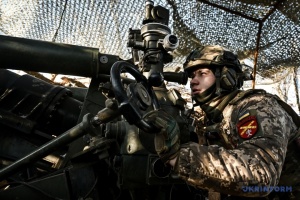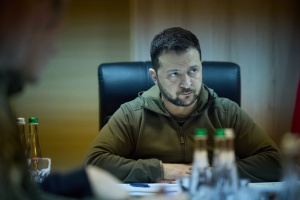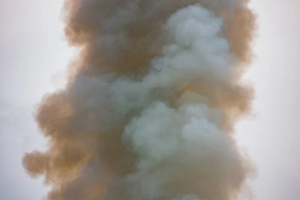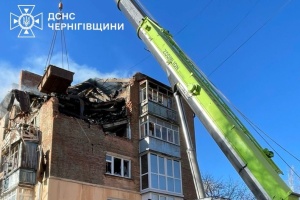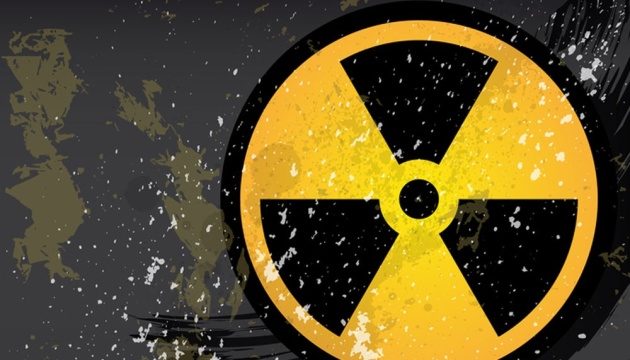
“Dirty bomb” is back. Why Russia reanimated the old fake story
The story had been conceived even before the full-scale Russian invasion and was extensively refuted by the Center for Strategic Communication, journalists, and fact-checkers.
At first, the story did not involve Ukrainian President Volodymyr Zelensky, rather touching upon “radicals not controlled by anyone.” Specifically, it was about the Ukrainian “National Corps” party created by veterans of the initial “Azov” unit (it used to be a volunteer formation, before it became a regiment as part of the National Guard).
In December 2021, the propaganda outlet Politnavigator uploaded on its page an obviously hoax video, claiming it showed some “device with radioactive filling” (sic), allegedly filmed by the “National Corps.” The video claims that this infernal machine was created for guerilla action and will be used in the event of the advance of Russian troops into the territory of Ukraine.
On February 4, it was picked up in a slightly “improved” form by a pool of pro-Kremlin Telegram channels (Joker DNR, Samooborona Horlovki, Pravda News, and Russian war correspondents).
The Russian fake story was poorly designed as it included multiple linguistic errors in “Ukrainian” words and Russian words put in captions; lack of sound (Russian fake masterminds somehow managed to translate the text of the subtitles, while failing to do a voice-over); a wrong logo of the National Corps; and a rather strange protective suit of the alleged “creator” of the dirty bomb: just gloves and a shirt with the sleeves rolled up.
On February 16, the Komsomolskaya Pravda newspaper published a huge text authored by senior propagandist Dmitri Steshin, in which Ukraine was portrayed as a source of nuclear threat to Europe. The case of the “dirty bomb of the National Corps” was one of the key subjects.
Additional impetus to the nuclear hysteria was given by the Munich Security Conference on February 19, at which President of Ukraine Volodymyr Zelensky reprimanded the Budapest Memorandum guarantor states for their chronic reluctance to meet for consultations at Ukraine’s request.
Among other things, Zelensky said:
“I will initiate consultations within the framework of the Budapest Memorandum. The Minister of Foreign Affairs is tasked with convening them, and if they do not take place again, or if there are no security guarantees for our state as a result of them, Ukraine will have every right to believe that the Budapest Memorandum is not working, and all the package decisions of 1994 have been called into question.”
The Russian media immediately twisted the content of Zelensky’s statement, claiming that he threatened to restore Ukraine’s nuclear status. Russian dictator Putin reproduced the same statement in his speeches in the following days.
After the full-scale invasion, the Russians tried to exploit the topic of the alleged “nuclear threat” to portray their aggression as a necessary “preemptive strike.”
On March 6, Russia’s Interfax agency, citing anonymous sources, claimed that Ukraine, “on the secret orders of Zelensky,” was working on the creation of a “dirty bomb,” and therefore the Russians were forced to act pre-emptively. The key role in its development was allegedly assigned to researchers with the Kharkiv Physical and Technical Institute (KhPTI).
The storyline was developed by Zvezda, a platform run by Russia’s MoD, which referred to the U.S. and Canada as Ukraine’s “accomplices,” followed by a pool of Telegram channels.
The spin was synced up with the Russian artillery strike on the KhPTI with its “Neutron Source” installation.
By that time, the Chornobyl and Zaporizhia NPPs had already been captured by Russian troops.
That is, the Russians covered up their real actions, which can be considered acts of nuclear terrorism, with fake stories claiming a “Ukrainian threat.”
The next wave of reports about the “nuclear provocation by Ukraine” came in autumn. That was how Russian propagandists interpreted the statements made by the Ukrainian authorities about the threat of the Kremlin deploying tactical nuclear weapons and Ukraine being ready to respond. However, neither President Volodymyr Zelensky nor NSDC Secretary Oleksiy Danilov made any hints or calls to use nuclear weapons against Russia.
This absurdity climaxed in the big statement of the “DPR” combatant Yuri Gagarin, aired on Russian television about Ukraine’s intentions to use a previously unknown type of weapon — a “surrogate bomb.” According to the militant, only the full-scale invasion on February 24 stopped this sinister plan.
Of course, these insinuations by the aggressor power have no chance to convince the global community. After Shoigu’s latest calls, foreign ministers of France, the UK, and the United States issued a joint statement in which they said: “Our countries made clear that we all reject Russia’s transparently false allegations that Ukraine is preparing to use a dirty bomb on its own territory. The world would see through any attempt to use this allegation as a pretext for escalation.”
On the other hand, the Russian nuclear horror cannot but cause concern. By keeping raising the stakes, one day the Kremlin may simply not be able to resist the temptation to drive humanity into a global catastrophe.
Center for Strategic Communication and Information Security


